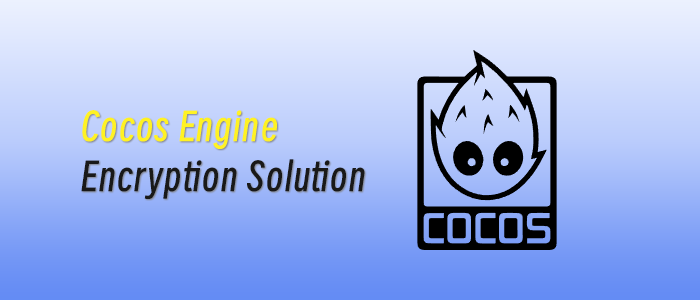This blog is part of our focus on Cisco employees who are “Striving for Sustainability” by finding opportunities to integrate sustainability in their day-to-day work.
At Cisco, packaging sustainability is a key aspect of our strategy to transition to a circular business model. We do this by designing packaging that protects our products while also minimizing environmental impact. This means using less materials when possible and choosing more sustainable materials — such as materials that contain recycled content and are recyclable or reusable.
I recently sat down with Nicole Kenney, Program Manager on the Packaging Engineering team, who focuses her work on packaging and material circularity. Nicole has been able to research and manage projects to support a range of sustainability issues related to packaging.
What inspired you to pursue a career in packaging sustainability, and how did you end up at Cisco?

 Nicole Kenney, Program Manager on the Packaging Engineering team.
Nicole Kenney, Program Manager on the Packaging Engineering team.
Nicole: Growing up, I was always in nature and constantly juggling multiple art projects. I knew I wanted to do something creative — that led me to the textile and apparel industry. After earning my degree in materials and polymer science, I developed fabrics and packaging for outdoor performance apparel and gear. The outdoor industry was one of the first to participate in the sustainability movement, and through my work on sustainability initiatives, I realized preserving nature was my purpose.
You might wonder about the transition from apparel products to technology hardware, but regardless of the industry, packaging challenges are universal: the main priority is to protect the product. In a circular economy, the next priority is to consider the packaging’s end-of-life. These are the challenges I’ve enjoyed tackling with our packaging engineering team at Cisco.
The thing I really love about packaging is that everyone can relate to it. Whether we’re making a purchase at a store or receiving a shipment at home, packaging is a part of our everyday lives. It serves as an important handshake between our brand and our customers, but to me, it also embodies the intersection of science, design, and psychology. When I came across the open Program Manager role and saw Cisco’s environmental strategy, I was drawn to the challenge.
How is Cisco integrating sustainability in its packaging?
Nicole: For our Packaging Engineering team, sustainability has evolved from a nice-to-have to an essential requirement for every new product introduction. This shift in our process is largely due to Cisco’s implementation of its Circular Design Principles, which guide us in integrating sustainability into all our outputs.
When it comes to material choices, our packaging engineers are focused on reducing foam use and finding alternatives to plastic (or eliminating plastic altogether). Packaging optimization is another area of focus; for instance, multi-packing can help save materials, which reduces cost and environmental impact.

 Nicole and Packaging Engineering team visiting Flex Guadalajara.
Nicole and Packaging Engineering team visiting Flex Guadalajara.
However, packaging sustainability varies greatly from one product to the next. Our packaging engineers face a challenging task: there is no set recipe for a more circular pack; rather, it is a balancing of multiple unique factors. They must prioritize product protection, because reshipping to replace a damaged product undermines sustainability. They also consider product volume; if a product is high-volume, optimizing cube size for palletization efficiency is crucial. The more units that fit on a pallet, the fewer pallets needed for shipping, which streamlines logistics and supports our corporate net zero strategy.
Overall, we strive to integrate recycled content, reduce plastic usage, and enable packaging to participate in a circular system.
What role does technology play in advancing Cisco’s packaging sustainability efforts?
Nicole: When it comes to technology and packaging, materials innovation is essential to advancing packaging sustainability. Our Packaging Engineering team collaborates closely with our suppliers to rethink materials from beginning to end, with a particular focus on fiber-based solutions.

 Example of a packaging test lab where samples are reviewed for quality and measured against specs for conformance.
Example of a packaging test lab where samples are reviewed for quality and measured against specs for conformance.
Two examples of materials innovation include fiber flute and paper modular cushions. These are both fiber-based cushioning systems that we use instead of conventional foam. They are made from post-consumer recycled content and, like corrugated cushions, are widely accepted in current recycling infrastructure at the end of their life cycle.
These new materials help contribute to our foam reduction efforts. However, we’re not merely swapping them out; extensive collaboration occurs during the design and validation process. Prototypes are created, fit checks are conducted, and packaging tests are performed to ensure the new materials added to our packaging toolkit meet both production and sustainability requirements.
What are some challenges you might encounter and how do you overcome them?
Nicole: One challenge of reducing packaging impacts is understanding how best to measure them. When it comes to sustainability, greenhouse gas emissions (GHG) tend to be the primary measure of environmental impact. However, analyzing the carbon footprint of Cisco’s products, packaging accounts for 3% or less of the manufacturing carbon footprint on average. Given this, Cisco’s Packaging Engineers keep the carbon footprint in mind, but design for recyclability to divert waste from landfill and support the circular economy.
Another challenge is finding protective materials that can meet our global supply chain demands and are regionally available. Exciting material innovations such as mushroom foam or bio-based plastics often spark interest, but continuity in sourcing and supply can be difficult. It’s also challenging to ensure that proper recovery infrastructure for those new materials is available in the markets where we sell our products. Those kinds of material innovations are often better suited for other product types, such as food or consumer packaged goods.
With Packaging Engineering colleagues standing next to liner paper rolls at a corrugating factory.At Cisco, we design our packaging to be separable and recyclable. Most of our packaging is fiber-based corrugated board which meets those requirements. However, we cannot control which bin our customers will use for packaging waste disposal. Recycling infrastructure varies greatly from town to town, both in the US and globally. This fragmentation poses the next challenge: how to educate our customers on the best way to manage packaging waste. We want customers to make informed decisions about disposal after receiving our products. To address this, we have begun to release products with simple but informative messaging to help them understand what to do with their packaging waste.
What future trends do you see in packaging sustainability?
Nicole enjoys traveling in nature with her family.Nicole: A successfully scaled circular economy requires collaboration between the business sector, consumers, and government. Among them, each entity has a vital role to play in driving sustainability. We’ve observed companies striving to offer more sustainable solutions. Consumers are increasingly seeking more sustainable options, evidenced by their purchasing choices. Now, we are seeing a surge of collaboration among the three entities.
As a corporation, we are aware that governments and the private sector are prioritizing circularity, and we recognize that this has an impact on our customers. This is an exciting time because we are engaging with our customers on packaging sustainability more than ever before. They are eager to understand our packaging roadmap, and we are equally interested in theirs. There’s a strong willingness to share, understand, and collaborate, making it an exhilarating time.
This trend gives me hope that as we work together, the circular economy is achievable across our business ecosystem.
You can learn more about our packaging goals in Cisco’s Purpose Reporting Hub.




































